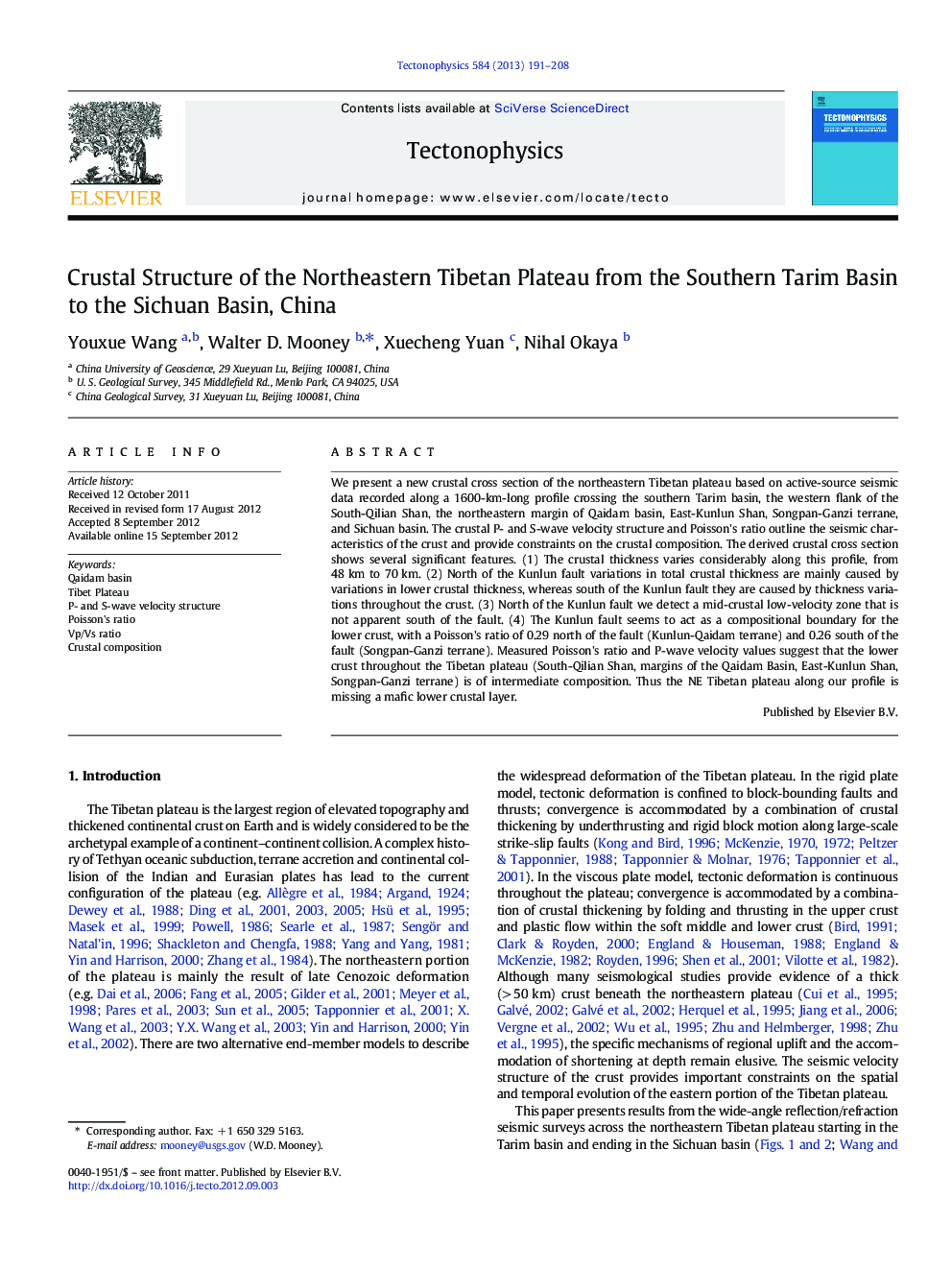| Article ID | Journal | Published Year | Pages | File Type |
|---|---|---|---|---|
| 4692447 | Tectonophysics | 2013 | 18 Pages |
We present a new crustal cross section of the northeastern Tibetan plateau based on active-source seismic data recorded along a 1600-km-long profile crossing the southern Tarim basin, the western flank of the South-Qilian Shan, the northeastern margin of Qaidam basin, East-Kunlun Shan, Songpan-Ganzi terrane, and Sichuan basin. The crustal P- and S-wave velocity structure and Poisson's ratio outline the seismic characteristics of the crust and provide constraints on the crustal composition. The derived crustal cross section shows several significant features. (1) The crustal thickness varies considerably along this profile, from 48 km to 70 km. (2) North of the Kunlun fault variations in total crustal thickness are mainly caused by variations in lower crustal thickness, whereas south of the Kunlun fault they are caused by thickness variations throughout the crust. (3) North of the Kunlun fault we detect a mid-crustal low-velocity zone that is not apparent south of the fault. (4) The Kunlun fault seems to act as a compositional boundary for the lower crust, with a Poisson's ratio of 0.29 north of the fault (Kunlun-Qaidam terrane) and 0.26 south of the fault (Songpan-Ganzi terrane). Measured Poisson's ratio and P-wave velocity values suggest that the lower crust throughout the Tibetan plateau (South-Qilian Shan, margins of the Qaidam Basin, East-Kunlun Shan, Songpan-Ganzi terrane) is of intermediate composition. Thus the NE Tibetan plateau along our profile is missing a mafic lower crustal layer.
► New deep seismic data from the NE Tibetan plateau. ► Strong lateral crustal variations are evident across the plateau. ► The crust of the Tibetan plateau is mainly felsic in composition.
